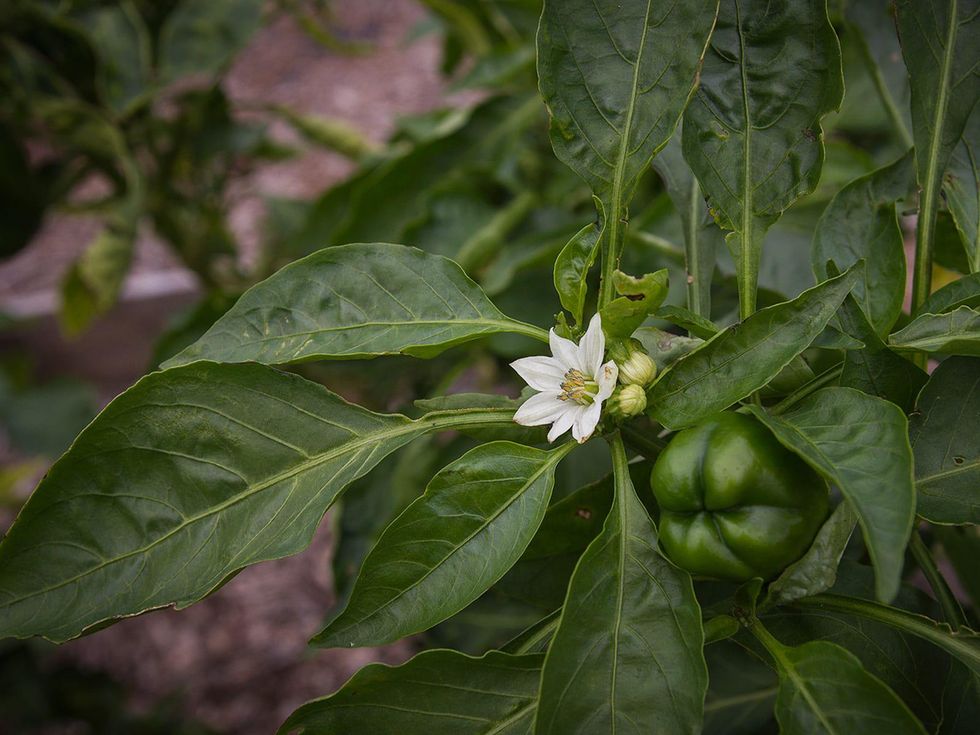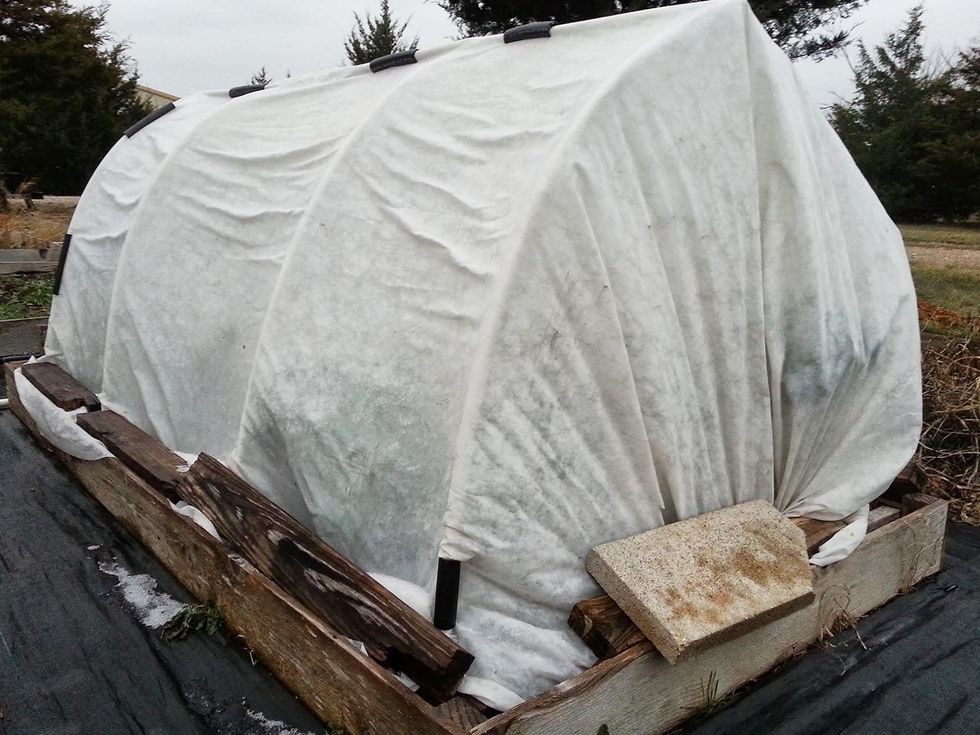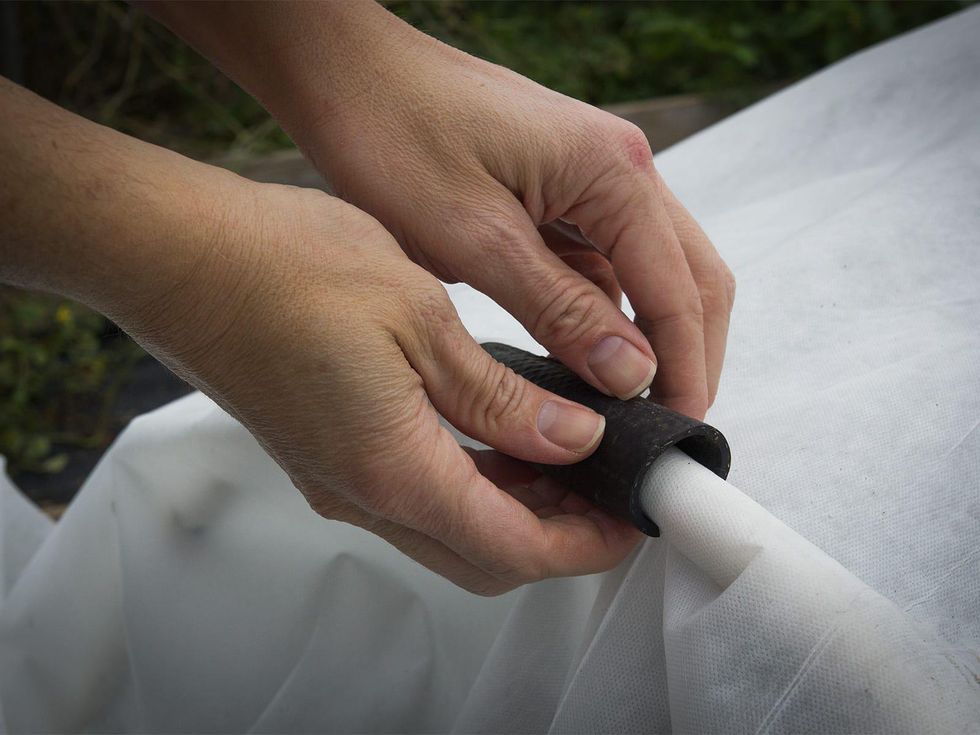The Farmer Diaries
North Texas farmer finds ways to foil winter's deadliest enemy
It's mid-November, and my tomato plants are bursting with green fruit, ready to ripen. My peppers are blooming. I'm still harvesting ripe, golden squash. But the trees have lost their leaves. Summer is over. Now comes the real threat for garden crops: frost.
From Central to North Texas, the average date of the first frost is somewhere between mid-November and the first of December. The nighttime temperatures dip down to 32 degrees, and the dew that forms on plant leaves turns into ice crystals.
Many crops are unaffected by mild frosts. In fact, frost improves the flavor of collard greens, kale, Swiss chard and other cool season veggies. But for tomatoes, squash, peppers or any warm-season crop, frost is a killer, which is a shame because daytime temperatures are usually perfect throughout the fall. The only problem is that hour or two each night when a chill sets in, right before sunrise.
I've learned that, by implementing simple measures to protect my garden against frost, I can enjoy summer produce as late as Christmas.
In the past, I let nature take its course when frost struck. But in the last three years, I've learned that, by implementing simple measures to protect my garden, I can enjoy summer produce as late as Christmas.
Frost technology
Frost protection has come a long way since the '80s, when my father would shield a few pet plants with old bed sheets. Now you can find commercially manufactured frost blankets made of spun polyester that do a better job. A 50-foot roll costs about $30 and covers three typical 4-by-8-foot raised beds.
Also known as "row cover," this UV-stabilized material is engineered to maintain temperatures under the blanketed area up to eight degrees above the ambient temperature. And unlike bed sheets that block too much light, frost blankets allow up to 85 percent of sunlight through, so you can leave them on crops for weeks of frigid weather.
Covering large, sturdy tomato plants with a frost blanket is easy. I float the blanket over the top of the plants and let the fabric drape over the sides. If the plants are short enough for the blanket to reach down to the ground, I'll weight it down in place with wood scraps or bricks. The goal is to make the blanket contact the ground all the way around the plants so that it traps heat radiating from the soil.
If the plants are too tall for the fabric to reach the ground, I wrap the sides of the plants first, then top them off with an additional section blanket from the roll. I use large clips, available from home improvement stores, to help keep the blankets hemmed together.
Plants such as peppers, squash and cucumber vines are too fragile to simply float a blanket over. They need a structure to hold the cover up and off of them.
For this, I make a frame of three 1/2-inch PVC pipes, cut to a length two feet shorter than the width of my frost blanket. To mount the pipes in the ground, I use six 18-inch-long concrete reinforcement bars (rebar) as stakes. Several 6-inch-long sections of 3/4-inch radiator hose, bought from an auto parts store, serve as clamps.
Mini covered wagon
To build the frost blanket structure, I push a rebar stake into each corner of a raised bed and one in the middle of the longest sides, for a total of three stands. I push the rebar down to the point that only about six inches of each stake remains visible above ground.
Frost blankets allow up to 85 percent of sunlight through, so you can leave them on crops for weeks of frigid weather.
PVC pipe usually comes in 10-foot-long sections, so I cut it down into shorter segments with a hacksaw. Then I place one end of the PCV pipe onto a stake and bend it so that I can place the other end onto the the stake on the opposite side of the bed.
With all three PVC pipes bent into place, they form a framework for the frost blanket. I float the blanket over the framework. Frost blanket material that's at least 10 feet wide works best; smaller blankets have less overlap to work with.
Next, I clamp the blanket to the PVC pipe with the radiator hose that I've slit open length-wise, so it fits over the pipe like a long rubber clothespin. The sides of the blanket where it meets the ground can be weighted down to form a snug, wind-proof shelter. It looks like a mini covered wagon.
Alternatively, I've saved some crops from severe freezes by filling three 5-gallon paint buckets with water and placing them in the center of the bed. I place one in the middle of each of the short ends and one in the center of the bed — like bridge columns running through the middle of the bed.
Then, I drape the frost blanket over the buckets and weight it down along the sides of the raised bed, forming a tent-like structure. It looks less impressive but is easier to assemble.
The water in the buckets releases more heat into the air under the blanket than the soil alone can. When I used this setup last spring during a late freeze, plunging temperatures froze the water in my rain barrels, but the water in the buckets under the frost blanket didn't freeze, and neither did the crops.
The same structures can also be built around frost-hardy kale and winter greens to save them from a hard freeze when the forecast is for mid-20s or below — the temperature that not even cold-season veggies can tolerate for long.
Eventually, despite my best attempts to protect them, winter will kill my warm-season crops. But frost blankets can give me a month longer to enjoy these veggies into the fall.
In the spring, they help me start seedlings and transplants as much as three weeks earlier than would be possible without protection. In either case, frost blankets have extended the growing season for me and ensured a harvest from my garden year-round.



